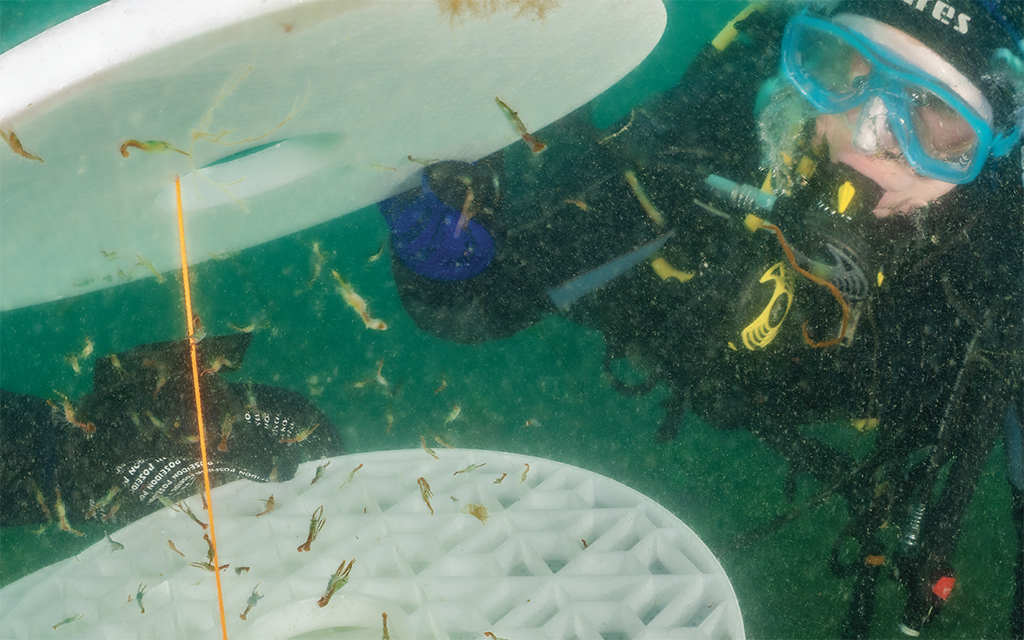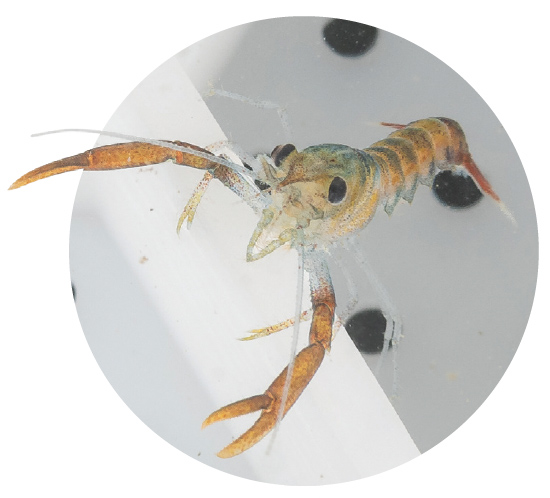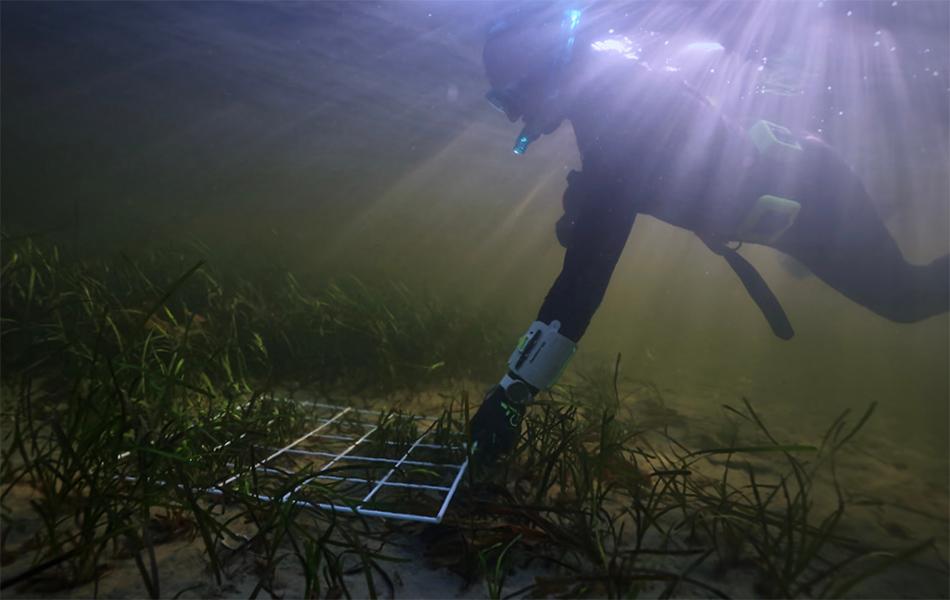
The world can be a cruel place for baby lobsters. Kirsty Andrews gives them a helping hand.
I enjoyed rather an unusual dive this month. Courtesy of the National Lobster Hatchery and their Ambassador Ryan Hunnisett (‘Scuba Ry’), I helped to release 675 baby lobsters to take their chances in the deep blue sea, or at least the shallow waters of Porthoustock in Cornwall.
That number of little lobsters may sound a lot, but it’s a mere fraction of the 20,000 or so eggs that a female ‘berried’ lobster will produce in one go. Female lobsters carry these thousands of eggs for nine to 12 months before releasing them at night to play the lottery of life. I like to see a lobster on a dive, but I admit I’d never given much thought to the trials of its life or the chances of it reaching the grand old age of fully grown.
We waded in from shore with our precious cargo tethered on an SMB line... and once we attained a respectable depth we carefully opened the disks one by one and watched mayhem ensue
Of the 20,000 eggs from one breeding female, only one is likely to survive to adulthood, and the chances of reaching ripe old age, one in a million. Have you seen an ancient lobster, its claws crusty and whitened and so large it can barely move them? I’ve been lucky enough to do so on a few occasions (especially in Marine Reserves where they stand a better chance of avoiding a pot), and wondered whether the crusty old crustacean was older than me - perhaps rather a lot older, and I wondered what sights it had seen. That’s nothing, though; I understand that the largest lobster specimen on record (from 1931 in Cornwall) measured 1.26m and weighed 9.3kg: its crushing claw alone weighed 1.2kg. What an animal.
Our slightly more petite batch had been lovingly reared at the Hatchery until they had reached three months old and were big enough to be released: thumbnail-sized toddlers. They are transported to the release site in big white plastic disks where each lobster has its own mini-compartment - this is because they are very cannibalistic, so solo travel is necessary to avoid incidents.
 We waded in from shore with our precious cargo tethered on an SMB line (I’ll admit that Ryan did all the heavy lifting) and once we attained a respectable depth we carefully opened the disks one by one and watched mayhem ensue. The baby lobsters were in trouble straight away: they escaped up from their tiny compartments and quickly headed downwards but in the meantime spider crabs and small fish circled the containers, ready for an easy meal. A bit of a shame from the lobsters’ perspective but I suppose our efforts were not wasted: indeed, very little is wasted in the sea.
We waded in from shore with our precious cargo tethered on an SMB line (I’ll admit that Ryan did all the heavy lifting) and once we attained a respectable depth we carefully opened the disks one by one and watched mayhem ensue. The baby lobsters were in trouble straight away: they escaped up from their tiny compartments and quickly headed downwards but in the meantime spider crabs and small fish circled the containers, ready for an easy meal. A bit of a shame from the lobsters’ perspective but I suppose our efforts were not wasted: indeed, very little is wasted in the sea.
The hatchery babies, if they survive the gauntlet of initial release, disappear into the safety of the sandy seabed, and there they will stay for at least the next two years. They don’t reach sexual maturity until five to seven years old - even at that point two amorous lobsters have to be well-matched in size, or there’s danger of a mating opportunity turning into a cannibalistic feast.
I do hope that some of our 675 charges made it to safety and are happily ensconced in sandy gravel as I type. If you too are interested in giving lobsters a helping hand then opportunities abound; Ryan organises regular lobster releases and is working on a speciality course on the subject with the backing of the Hatchery.
Alternatively, if you want to organise something for your dive club, you can get in touch direct with the National Lobster Hatchery in Padstow, or indeed pop by for a visit to their centre, so that you too can thrill your friends with fun lobster facts.
Article ‘Release the lobsters!’ by Kirsty Andrews first published in SCUBA magazine, Issue 149 September 2024.

 Author: Kirsty Andrews | Posted 02 Oct 2024
Author: Kirsty Andrews | Posted 02 Oct 2024



